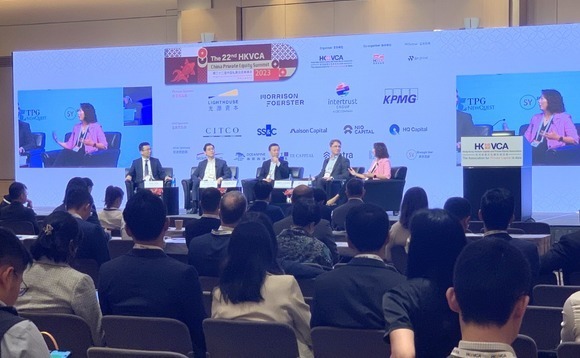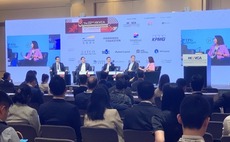
Investor caution, bid-ask spreads hold back China secondaries

Secondaries investors see a lot of potential GP-led deal flow coming out of China, but completion rates are being held back by caution among buyers and a reluctance among sellers to compromise on valuations.
"The level of deal flow is probably the highest we've ever seen and most of it is proprietary, but you need to be cautious as to the type of deals you do and how you do them," Frederic Azemard, a managing partner at TR Capital, told the Hong Kong Venture Capital & Private Equity Association's China summit.
TR has three key criteria when assessing deals. The target industry must be relatively benign with limited exposure to politically sensitive issues, the target company should be able to maintain growth even in the event of an escalation in US-China tensions, and the valuation must be reasonable.
Min Lin, a partner at TPG NewQuest, noted that her firm tracked USD 20bn in GP-led transactions in Asia last year – 50% in China, 30% in India, and the rest Southeast Asia and pan-regional. Completed deals amounted to around USD 4bn. On the demand side, TPG NewQuest estimates there is USD 10bn in dry powder, including dedicated Asia secondary funds and target allocations to the region from global funds.
Lin described Asia, and China in particular, as a buyer's market. The biggest impediment is the pricing mismatch created by an aggressive ramp-up in 2021 – to the extent that companies "overextended their next-round valuations" – and the fact that the drop in public market comparables hasn't fully filtered through to the private markets space.
These sentiments were echoed by Martin Yung, a principal at HarbourVest Partners. He noted that many portfolios his team evaluates are crammed with companies still marked at last-round valuations predicated on outlooks that haven't been fulfilled. Seller motivation is another factor.
"A lot of deals don't get done because the GPs are going in with preconceived ideas that aren't necessarily correct, particularly in the current environment. They are doing it for the wrong reasons, and they need time to adjust the mindset for secondaries," Yung said, adding that managers are often reluctant to write down portfolios while in the middle of a fundraise.
Investors can make inroads by targeting specific sectors – TR Capital is finding better entry points in technology than consumer because the valuation correction has been more profound – and through structuring. Deferred payments and distribution-sharing structures like preferred equity are becoming more commonplace.
Mingchen Xia, a managing director and co-head of Asia investments at Hamilton Lane, added that it can be easier to get traction with early-stage investors. They got in at such a low valuation that their return multiples may still be substantial even after selling to a secondary investor at a 50% discount.
It is generally agreed that managers have become more amenable – driven by a combination of increased familiarity with secondaries and pressure to generate liquidity.
"Two or three years ago, people were coming to us in year seven or eight, ahead of the end of the fund. Now they are coming to us in year three or four, saying, ‘We want to do a deal with you, generate some DPI [distributions to paid-in], and then go back to LPs and show the model is working," said Azemard. "This is increasing the addressable market, and we have some well-known GPs coming to us."
NewQuest is also seeing bigger names exploring secondaries options as well as more repeat business from GPs that find a liquidity solution for one fund and then come back the following year with other funds. This – plus the notion that valuation discounts are more acceptable in secondaries transactions than in the primary market – is fuelling Min's optimism on China, despite assorted external pressures.
"If you want to invest in China this year or next year, secondaries is the way to go. With primary capital, it's hard for companies to do down rounds. If they have money left, they will run for longer. If they don't have money, they may do down rounds, but that's difficult," Min said.
"In secondaries, by nature, we negotiate discounts. With GP-led transactions we have an opportunity to get our hands around interesting assets at interesting prices. But we are cautious, setting a high bar."
Latest News
Asian GPs slow implementation of ESG policies - survey
Asia-based private equity firms are assigning more dedicated resources to environment, social, and governance (ESG) programmes, but policy changes have slowed in the past 12 months, in part due to concerns raised internally and by LPs, according to a...
Singapore fintech start-up LXA gets $10m seed round
New Enterprise Associates (NEA) has led a USD 10m seed round for Singapore’s LXA, a financial technology start-up launched by a former Asia senior executive at The Blackstone Group.
India's InCred announces $60m round, claims unicorn status
Indian non-bank lender InCred Financial Services said it has received INR 5bn (USD 60m) at a valuation of at least USD 1bn from unnamed investors including “a global private equity fund.”
Insight leads $50m round for Australia's Roller
Insight Partners has led a USD 50m round for Australia’s Roller, a venue management software provider specializing in family fun parks.







